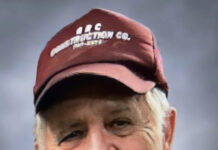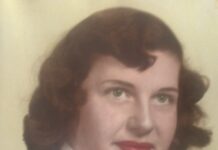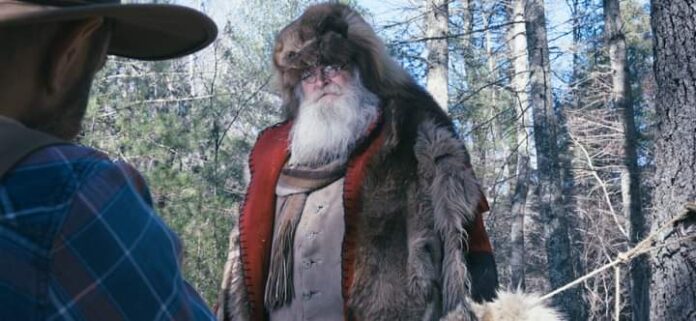BURRILLVILLE – Stephen Salisbury lives in four different centuries. A longtime reenactor, he regularly takes trips to the 17th, 18th and 19th century, all while living in the 21st. He has been a regular, filling the role of soldier, pirate and sutlery merchant, in whatever century he happens to land at the time.
“I love history,” Salisbury said. “I just eat it up.”
His time travel began as a 15 year old, when his mother took him to a reenactment of the Battle of Rhode Island in Tiverton in 1975. There, he got to talk to one of the reenactors. A student of history, he immediately became enchanted with the idea of living in another era where he could experience the life of the times, especially as a soldier. One of the reenactors from the British side, Colonel Wall, showed him how to throw the British Light Infantry tomahawk he had purchased. Salisbury was hooked.
A year later, a small British reenactment group placed an ad looking for people interested. Salisbury, now 16, and legally old enough to carry a musket or firearm, immediately applied in hopes of being part of the Bicentennial Celebration that year. At first the company was reluctant to admit him, but Salisbury explained his love of history and desire to be a part of it. When he also mentioned he was six foot six inches tall, he was invited to attend the meeting.
“He said, ‘We don’t really take in a lot of kids.'” recalled Salisbury. “I said I am also six foot six. He said, ‘Come to the meeting.’ I came to the meeting, and I was a foot taller than the captain, David Ducharme. He said, ‘Lose the beard, and you’re in.’ I have been doing reenacting ever since. I knew after the first year I would be doing it the rest of my life.”
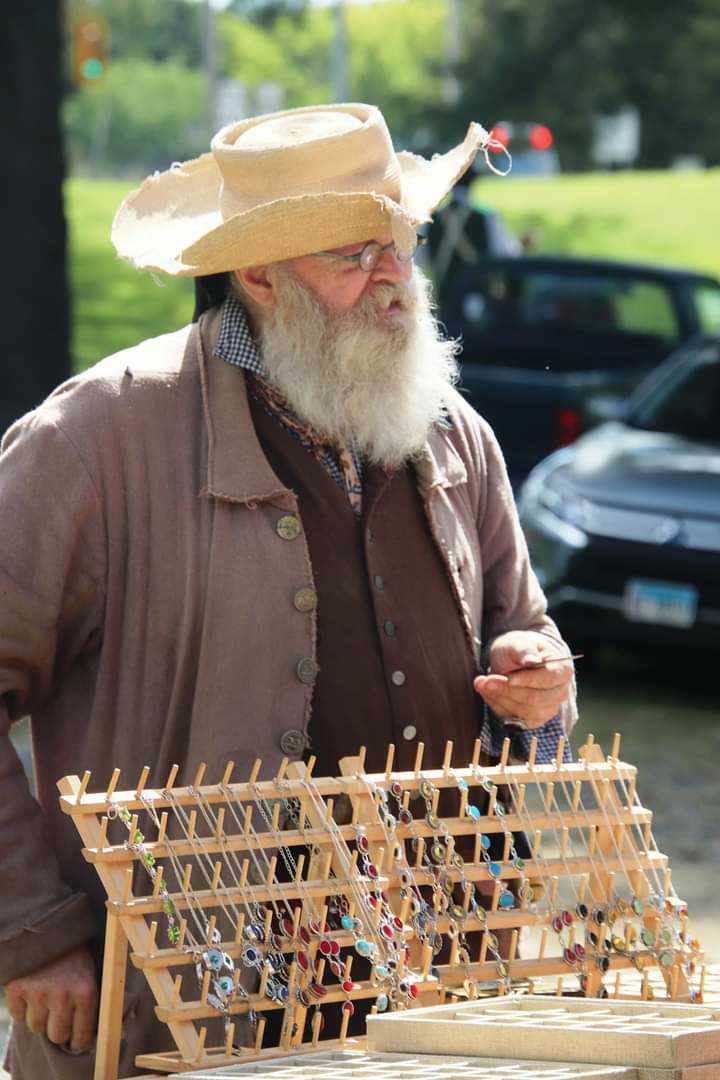
One century, apparently, wasn’t enough, nor was one role. In each century he not only is in a different time, but a different role as well. In a particular century, he may also play multiple roles, requiring different dress and different items. In the 17th century, for example, he portrays a targeteer, which is a semi-honored militia man, replete with sword and shield. That reenactment particular company is located in Plymouth, Mass. Mid century, he portrays a Rhode Island militiaman and in the late 17th century, Salisbury becomes a pirate from Newport, in Thomas Tiu’s crew.
In the 18th century, Salisbury is now a Scottish immigrant for Roger’s Rangers during the French and Indian Wars. The role includes a Scottish accent, and a smattering of the Mohawk language, which he has partially learned. The events take place in upstate New York and Vermont. He may also portray a French voyager, speaking in an early French dialect.
For the Revolutionary War in the 19th century, Salisbury becomes a member of the 46th British Regiment. As part of the Bicentennial, he was a light infantryman and a grenadier.
“Those were the most uncomfortable outfits,” he recalled.

Nowadays, Salisbury portrays a privateer for the American Revolution. Researching the role, as always, he was surprised at how much the economy depended on privateers, who were basically legal pirates, depending on what country they are attacking at the time.
“I was amazed at how much the economy depended on privateering during the Colonial years,” said Salisbury. “It wasn’t strange to see upwards of 3,000 percent profits on successful privateering ventures. When I say ‘privateering,’ it is legal piracy.”
It was not unusual, he added, for private investments and even members of Congress and other state officials to engage in supporting, pirates, who would go out and make a profit from attacking vessels from other countries, as long as they didn’t attack vessels from friendly countries. Salisbury, ironically, has direct connections to his own pirate ancestry.
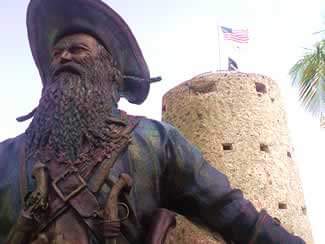
“My sixth great grandfather sailed out of Newport on the Reprisal, which was owned by Stephen Hopkins,” he said.
Hopkins, who signed the Declaration of Independence representing Rhode Island, went from being a deckhand to owning a large farm in Maine – just by taking French ships in the King George’s war in the 1740s. Hopkins, in fact, outfitted privateers in three different wars. It was a way, said Salisbury, to harm the enemy’s trade.
“Many of the wealthy families in New England outfitted privateers from King William’s war of the 1680s, right up to the War of 1812,” Salisbury said.
These days, Salisbury can be found plying wares at various reenactments as if he were, indeed, someone who sold needed items to soldiers at the time. The items he sells include everything from jewelry to dice, playing cards, plates, knives, forks, goblets, coins and other items that would have been available during the time in which he finds himself. Naturally, like with the costumes, everything is handmade and representative of the century involved. His official title is a sutlery merchant, a 16th century Dutch term, basically translated to be a military contractor of sorts. Every century you go back, said Salisbury, there is less to sell. For the 17th century, his wares fill one table. For the 19th, there are three tables.
“Every military camp would have a section set aside for sutlers,” explained Salisbury. “It was called ‘Sutlers Row.'”
He named his “business” Big Bear Trading Company, a title he was given after an incident in the Queens, N.Y. It seems the local state park area in which the reenactment group was staying was challenged by a local gang. They said it was their area, and that the reenactors had better clear out or else, which they refused to do.
At their campsite after dark, Salisbury, portraying a native American, was dressed in a bearskin, including paws dangling from his sides and a Wolverine fur hat. Add to that a full beard, brown/reddish in color, on his six feet, six inch figure. During the course of the evening, rather than take a walk to the porta johns, he took a walk into the woods. On the return walk, he came across a group dressed in black crawling through the grass and bushes towards the encampment. Salisbury started creeping towards the last one, who heared him and turns around, lighting his lighter to see what the weird figure was behind him.
“As soon as the lighter goes on, I come up to my full height and go, ‘AHHHH,’ right into his face,” recalled Salisbury. “Off they tear through the woods running in all directions. I’m chasing after them howling and growling like a wolverine.”
He was later informed by local police investigating the incident that the boys left remnants of torn shirts in thorn bushes as a result. They never came back, Salisbury said, due to a rumor that a big bear was loose in the park. Thus, he became known as “Big Bear.”
This year he is on track to do 57 reenactments, a new personal record. The biggest event of the year in New England, he said, was at Old Sturbridge Village in the second week of August, which overflowed parking lots, drawing thousands to witness a Revolutionary War event.
An even bigger event, however, was the 135th Anniversary of Gettysburg in 1998.
“That was the largest reenactment ever,” recalled Salisbury, who was part of the Confederate Army. “22,000 on the battlefield. A hundred cannons going off. At times you couldn’t even see the Union line, there was so much smoke.”
That event included reenactors who arrived from all over Europe, England, and even New Zealand and joined various groups, just to be a part of the experience.
“We did three days of battle,” Salisbury said. “There were 200,000 people there.”
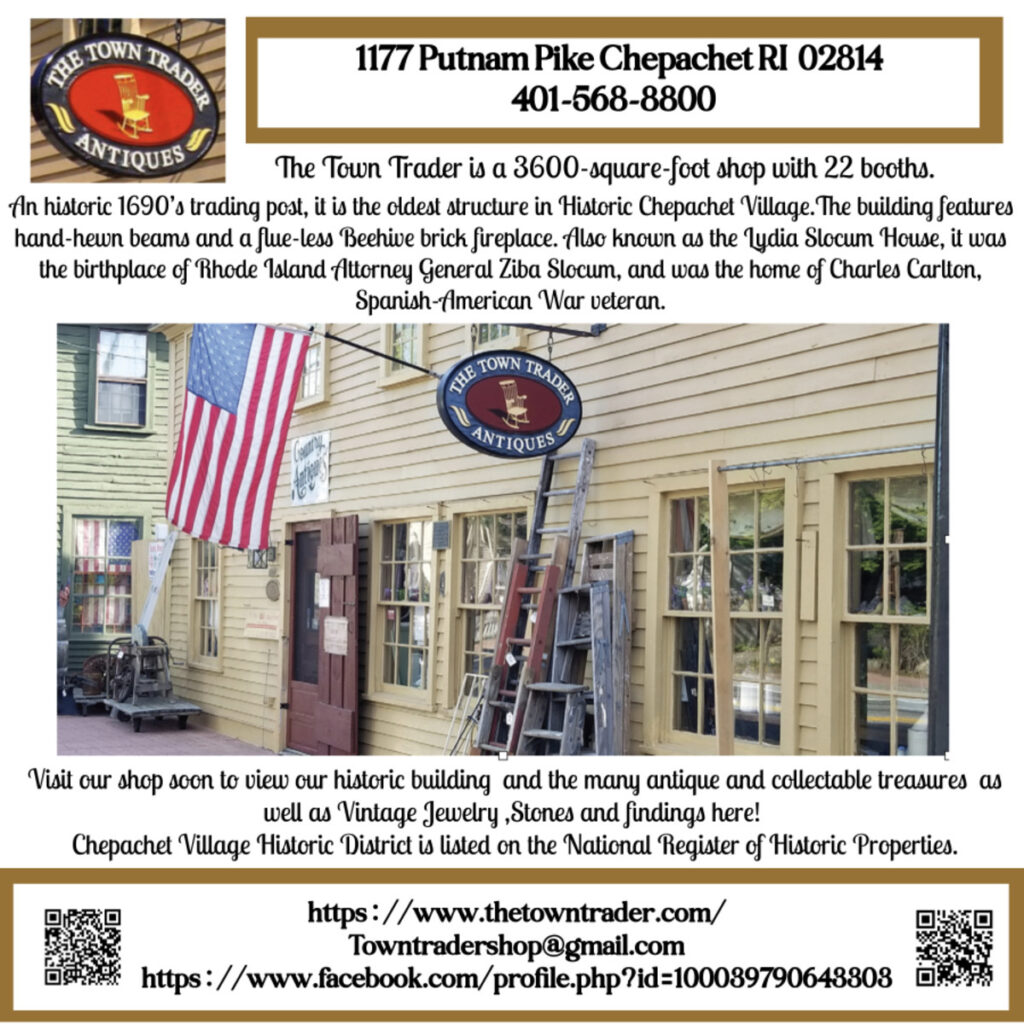
As to why he was in the Confederate Army, Salisbury said that when was considering which camp to join, he visited both. The Union camp was uptight, strictly dressed, and not very friendly. The Confederate side, however, was the exact opposite.
“I walk into the Confederate camp,” Salisbury, 65, recalled. “People are sitting around the campfire. They’re passing around a jug. Someone has an instrument playing. This was like walking into a Roger’s Rangers encampment. It was nothing to do with politics. It was just more inviting. I joined a group that was out of Uxbridge.”
The uniform cost for Confederates was also one quarter the cost of a Union uniform.
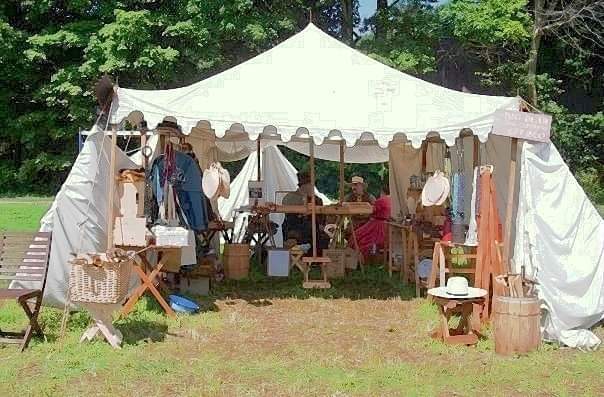
In the 21st century, Salisbury has a high security clearance, after working for many years for Electric Boat dealing with submarine technology and various precious metal companies, some of which were connected directly to the U.S. Mint. These days, he works in a similar capacity for Tiffany’s.
Not surprisingly, Salisbury, a 1977 Burrillville High School graduate, is a huge history buff, who easily recalls dates, people, battles and other significant – and insignificant – details of the past. As a reenactor, he gets to time travel to times past and check them out himself, if only for a brief period of time.
“When you’re at an event, and you can’t see anything modern,” he explains. “It gives you a shiver of reality, of manning the walls at Fort Ticonderoga at three o’clock in the a.m., or hearing a door close across Lake Champlain from a farmhouse… maybe someone just getting up in the morning, or looking around and not seeing anything modern. It is a whole other world.”

